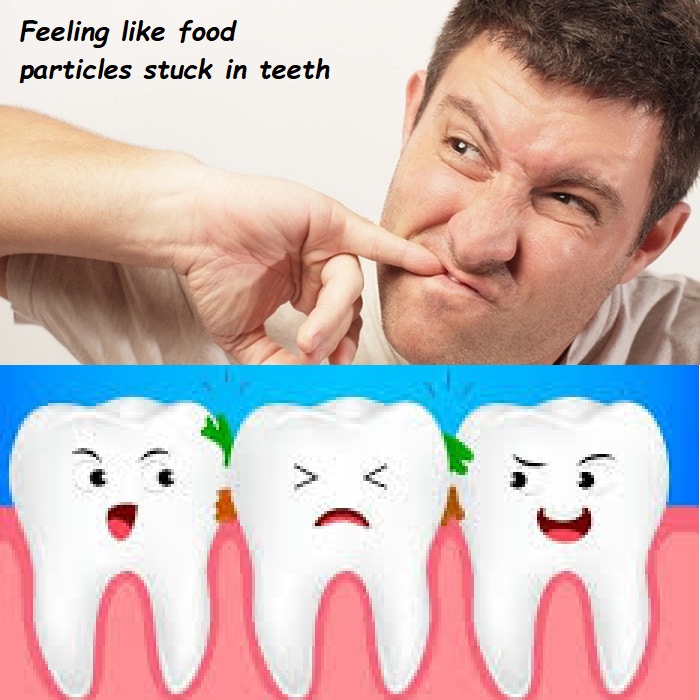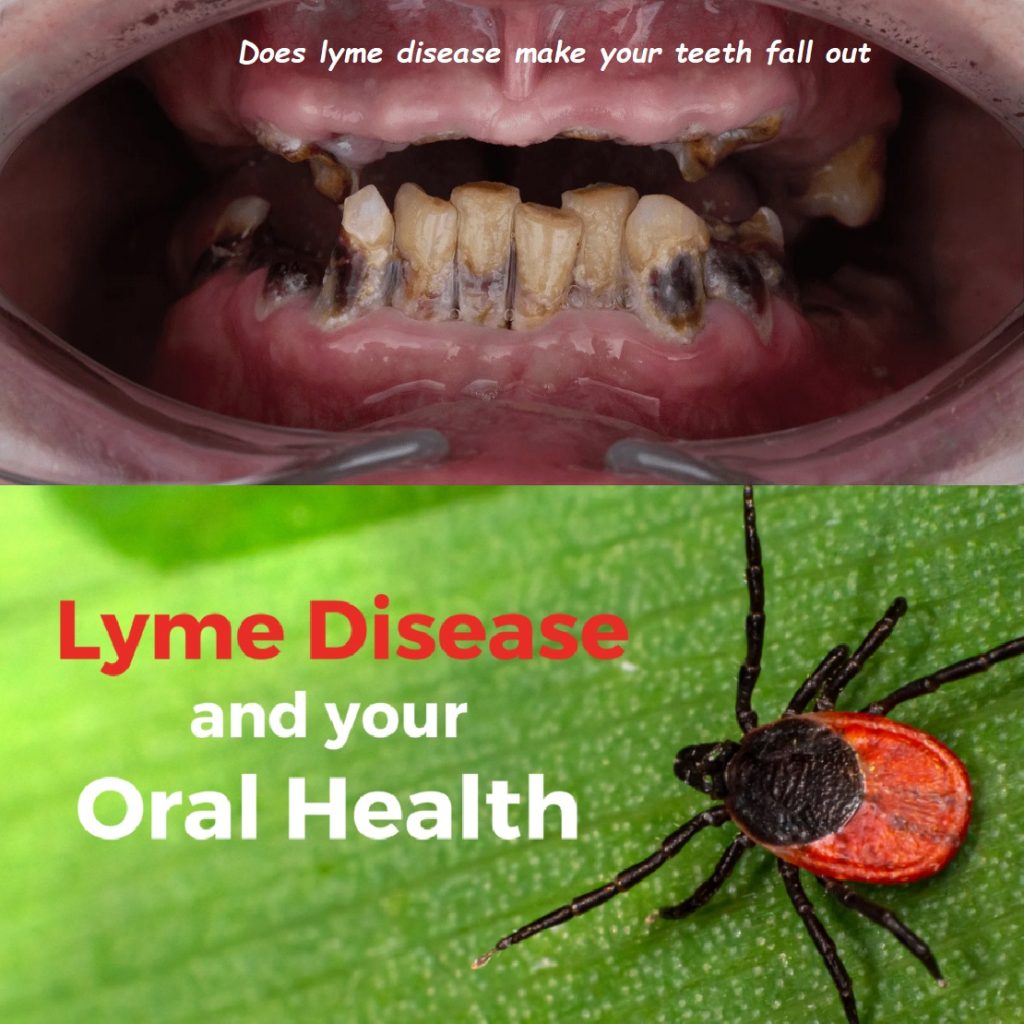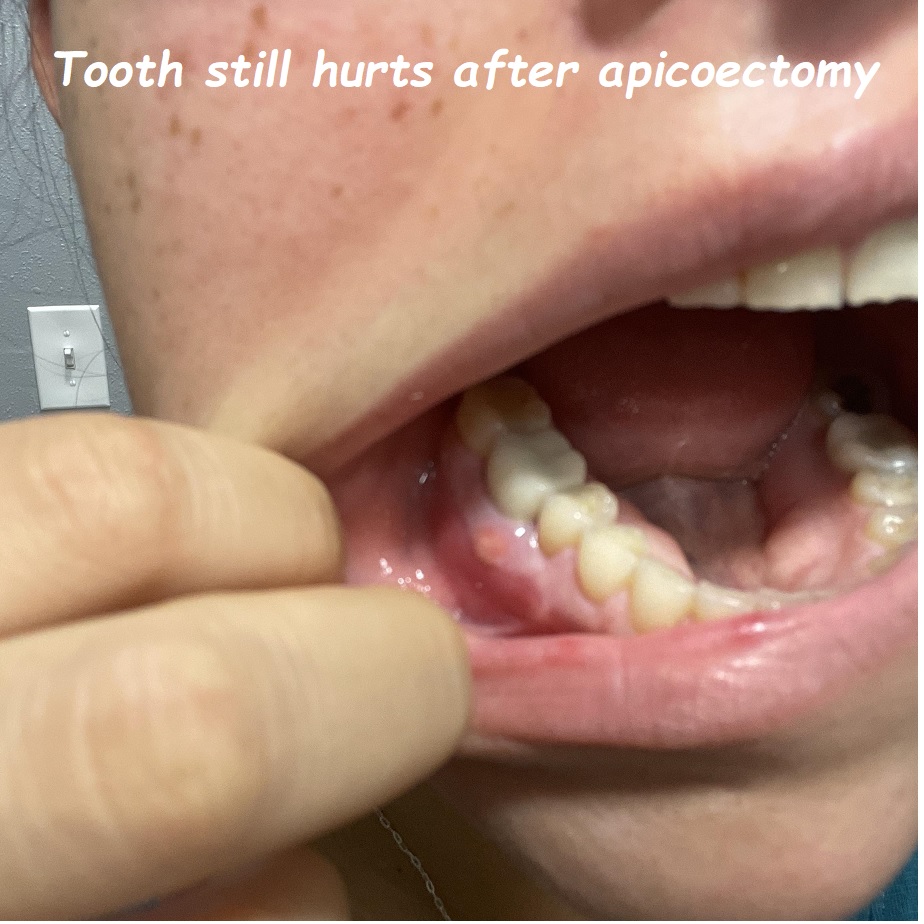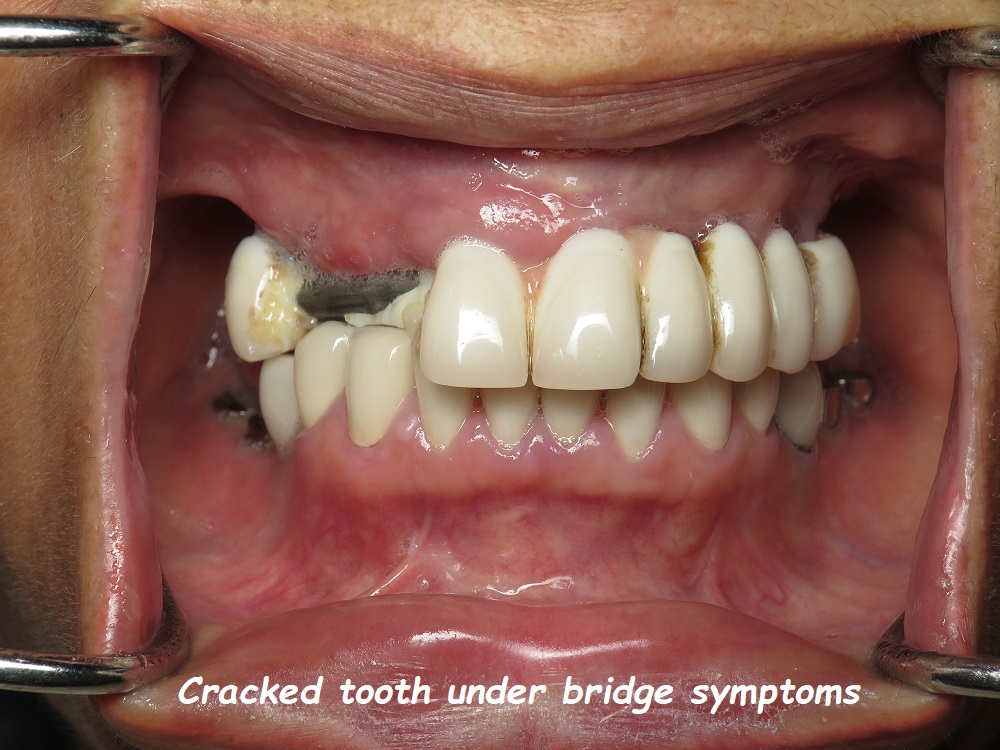Tooth decay under bridge symptoms
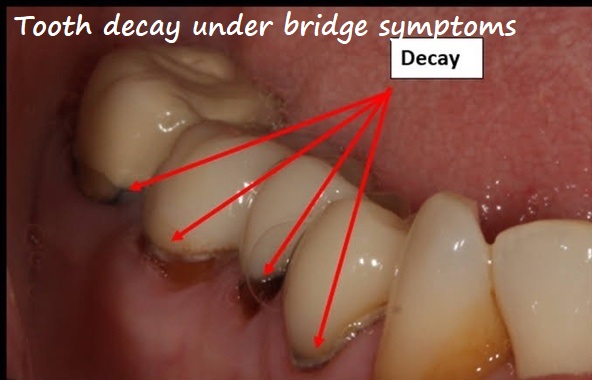
Dental bridges are a popular solution for replacing missing teeth, offering both functional and aesthetic benefits. However, like natural teeth, bridges are susceptible to dental issues, particularly tooth decay under the bridge. Understanding the symptoms of tooth decay under a bridge, along with its causes, prevention, and treatment options, is crucial for maintaining oral health. This comprehensive guide delves into every aspect of tooth decay under bridges to help you recognize the signs and take appropriate action.
What is a Dental Bridge?
A dental bridge is a fixed dental restoration used to replace one or more missing teeth. It involves creating a “bridge” of artificial teeth anchored to adjacent natural teeth or dental implants. There are several types of dental bridges:
- Traditional Bridges: Consist of a false tooth or teeth held in place by crowns that are cemented onto each of the abutment teeth.
- Cantilever Bridges: Used when there are adjacent teeth on only one side of the missing tooth or teeth.
- Maryland Bridges: Also known as resin-bonded bridges, these involve a metal or porcelain framework bonded to the backs of the adjacent teeth.
- Implant-Supported Bridges: Used when there are no natural teeth to support the bridge, relying instead on dental implants.
Causes of Tooth Decay Under Bridges
Tooth decay under a bridge, also known as secondary or recurrent decay, can occur for several reasons:
- Poor Oral Hygiene: Inadequate brushing and flossing can lead to plaque buildup, which harbors bacteria that produce acids, leading to decay under the bridge.
- Leaky Margins: Over time, the cement that holds the bridge can wear away or become defective, allowing bacteria to seep under the bridge.
- Diet: High sugar and acid consumption can increase the risk of tooth decay under the bridge.
- Gum Recession: As gums recede with age or due to periodontal disease, they can expose the margins of the bridge and underlying teeth to decay.
- Improper Fit: If the bridge does not fit well, it can create spaces that trap food and bacteria, leading to tooth decay under the bridge.
Symptoms of Tooth Decay Under a Bridge
Detecting tooth decay under a bridge can be challenging, but there are several signs and symptoms to be aware of:
- Pain and Sensitivity: Pain when chewing, sensitivity to hot, cold, or sweet foods, or a constant ache can indicate tooth decay under the bridge.
- Bad Breath: Persistent bad breath (halitosis) can be a sign of bacterial growth and tooth decay under the bridge.
- Bad Taste: A constant bad taste in the mouth can also be a symptom of tooth decay under the bridge.
- Swelling and Redness: Swelling, redness, or bleeding of the gums around the bridge can indicate infection or tooth decay under the bridge.
- Loose Bridge: A bridge that feels loose or moves slightly can be a sign of decay affecting the supporting teeth.
- Visible Discoloration: In some cases, you may notice discoloration or dark spots near the edges of the bridge.
Diagnosing Tooth Decay Under a Bridge
Diagnosing tooth decay under a bridge requires a thorough examination by a dental professional:
- Clinical Examination: The dentist will visually inspect the bridge and surrounding tissues for signs of decay.
- Probing: A dental probe may be used to check for gaps or weaknesses around the bridge margins.
- X-rays: Dental X-rays can reveal decay hidden beneath the bridge or in the supporting teeth.
- Laser Detection: Some dentists use laser fluorescence devices to detect decay that may not be visible on X-rays.
Preventing Tooth Decay Under Bridges
Preventing tooth decay under a bridge involves good oral hygiene practices and regular dental care:
- Proper Brushing: Brush twice daily using a fluoride toothpaste, focusing on the area around the bridge.
- Flossing: Use floss threaders or interdental brushes to clean under the bridge and between the teeth.
- Mouthwash: An antibacterial mouthwash can help reduce plaque and bacteria.
- Regular Dental Visits: Schedule regular check-ups and cleanings to monitor the health of your bridge and surrounding teeth.
- Diet: Limit sugary and acidic foods and drinks to reduce the risk of tooth decay under the bridge.
Treatment Options for Tooth Decay Under Bridges
If decay is detected under a bridge, treatment options will depend on the extent of the damage:
- Cleaning and Sealing: Minor decay may be treated by cleaning the affected area and sealing it to prevent further damage.
- Bridge Removal and Replacement: In cases of extensive decay, the bridge may need to be removed, the decay treated, and a new bridge fabricated.
- Restorative Procedures: If the supporting teeth are damaged, they may require fillings, root canals, or crowns before a new bridge can be placed.
- Implant-Supported Bridges: If the supporting teeth are too damaged to be restored, dental implants may be considered as an alternative support for the bridge.
Long-Term Care and Maintenance
Maintaining the health of your dental bridge and preventing future tooth decay under the bridge involves a combination of good habits and professional care:
- Consistent Oral Hygiene: Continue with diligent brushing, flossing, and use of mouthwash.
- Regular Dental Check-Ups: Visit your dentist regularly for check-ups and professional cleanings.
- Prompt Treatment: Address any dental issues, such as sensitivity or discomfort, as soon as they arise to prevent complications.
- Night Guards: If you grind or clench your teeth, a night guard can protect your bridge and natural teeth from excessive wear.
Understanding the Risks and Complications
While dental bridges are effective in restoring function and aesthetics, they come with certain risks and potential complications:
- Recurrent Decay: As discussed, tooth decay under the bridge is a common issue and requires vigilance in oral care.
- Gum Disease: Poor oral hygiene can lead to gum disease, which can compromise the support for the bridge.
- Bridge Failure: Decay or damage to the abutment teeth can lead to bridge failure, requiring extensive dental work to replace.
- Bone Loss: Missing teeth can lead to bone loss in the jaw over time, affecting the fit and stability of the bridge.
Patient Experiences and Case Studies
Learning from real-life patient experiences and case studies can provide valuable insights into managing and preventing tooth decay under bridges:
Case Study 1: Early Detection and Treatment
A 50-year-old patient noticed mild sensitivity around their dental bridge. Upon examination, the dentist detected early decay around one of the abutment teeth. The bridge was removed, the decay treated with a filling, and the bridge re-cemented. The patient was advised on improved oral hygiene techniques and experienced no further issues.
Case Study 2: Advanced Decay and Replacement
A 60-year-old patient ignored persistent bad breath and discomfort around their bridge. Eventually, the bridge became loose, and upon examination, extensive decay was found in both abutment teeth. The bridge was removed, the teeth required root canals and crowns, and a new bridge was fabricated. The patient now follows a strict oral care regimen and regular dental visits to prevent recurrence.
Patient Experience: Managing Anxiety and Oral Health
A 45-year-old patient with a history of dental anxiety delayed seeking care for discomfort around their bridge. Education and reassurance from their dentist helped them overcome their fear. The decay was treated, and the patient now adheres to regular check-ups and improved oral hygiene, significantly reducing anxiety about future dental issues.
Innovations in Dental Bridge Care
Advancements in dental technology and materials continue to improve the prognosis and management of dental bridges:
- Digital Dentistry: Digital impressions and CAD/CAM technology enable precise fit and fabrication of bridges, reducing the risk of gaps and decay.
- Biocompatible Materials: New materials such as zirconia offer improved aesthetics and durability, reducing the risk of decay.
- Laser Dentistry: Laser technology can detect and treat decay with greater accuracy and less discomfort.
- Preventive Sealants: Sealants can be applied to the margins of bridges to protect against decay.
Educational Outreach and Awareness
Increasing awareness and education about the importance of bridge care can help prevent tooth decay under bridges and improve outcomes:
- Public Health Campaigns: Campaigns to educate the public about the importance of oral hygiene and regular dental visits.
- Patient Education Materials: Providing patients with informative materials about the care and maintenance of dental bridges.
- Professional Training: Ongoing training and education for dental professionals to stay updated on the latest advancements in bridge care.
Long-Term Care Strategies
- Customized Oral Hygiene Plans: Working with your dentist to develop a customized oral hygiene plan tailored to your specific needs and bridge type.
- Use of Advanced Dental Products: Utilizing advanced dental products such as electric toothbrushes and water flossers to enhance cleaning efficiency around the bridge.
- Regular Professional Cleanings: Scheduling professional cleanings more frequently if you are prone to plaque buildup or have a history of dental issues.
The Role of Diet in Preventing Tooth Decay Under Bridges
Diet plays a significant role in maintaining oral health and preventing tooth decay under bridges:
- Balanced Diet: Consuming a balanced diet rich in vitamins and minerals supports overall oral health.
- Limiting Sugary Foods and Drinks: Reducing the intake of sugary and acidic foods and beverages helps prevent plaque buildup and decay.
- Hydration: Drinking plenty of water helps wash away food particles and bacteria, reducing the risk of decay.
Psychological Impact of Dental Issues
Dental issues, including tooth decay under bridges, can have a psychological impact:
- Anxiety and Stress: Dental problems can cause anxiety and stress, particularly if they result in pain or the need for extensive treatment.
- Self-Esteem: Issues with dental bridges can affect self-esteem and confidence, especially if they impact appearance.
- Quality of Life: Dental health is closely linked to overall quality of life, affecting eating, speaking, and social interactions.
Support and Resources
Support and resources are available for those dealing with tooth decay under bridges:
- Dental Support Groups: Joining support groups or online communities can provide emotional support and practical advice from others with similar experiences.
- Educational Resources: Accessing educational resources and materials can help you better understand and manage your dental health.
- Professional Counseling: Seeking professional counseling or therapy can help address anxiety or stress related to dental issues.
The Importance of Early Intervention
Early intervention is key to managing and preventing complications from tooth decay under bridges:
- Routine Check-Ups: Regular dental check-ups allow for early detection and treatment of any issues before they become severe.
- Monitoring Symptoms: Being vigilant about any changes or symptoms in your oral health and seeking prompt dental care.
- Preventive Measures: Implementing preventive measures such as improved oral hygiene and dietary changes to reduce the risk of decay.
Conclusion
Tooth decay under a bridge can be a challenging issue, but understanding the causes, symptoms, prevention, and treatment options can help mitigate the impact. Preventive measures and long-term care are crucial in maintaining the health of your dental bridge and surrounding teeth. With advancements in dental technology and a focus on patient education, the prognosis for dental bridges continues to improve, offering hope and solutions for those affected by this condition. By staying informed and proactive, you can protect your dental health and enjoy the benefits of your bridge for years to come.


